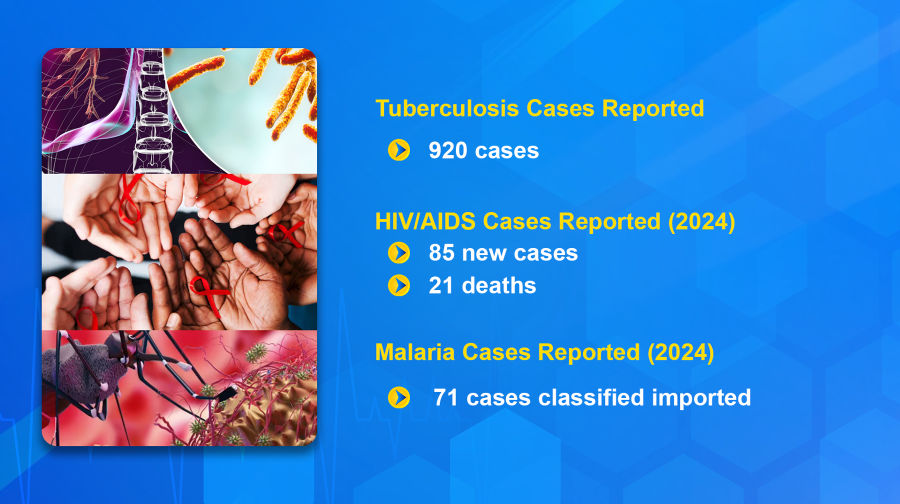 Bhutan continues its battle against Tuberculosis, HIV/AIDS, and Malaria. The latest health bulletin, published last week, reveals a rise in these diseases and calls for targeted interventions, stronger cross-border collaboration, and continued community awareness.
Bhutan continues its battle against Tuberculosis, HIV/AIDS, and Malaria. The latest health bulletin, published last week, reveals a rise in these diseases and calls for targeted interventions, stronger cross-border collaboration, and continued community awareness.
In 2024, the country reported 920 cases of tuberculosis, with 65 per cent identified as pulmonary TB, the contagious form of the disease.
As per the health bulletin, a majority of the cases were reported among the economically active age group.
The National Tuberculosis Control Programme under the Health Ministry is working to reduce TB cases. The programme focuses on prevention, timely diagnosis, standardised treatment protocols, and sustained public awareness.
Bhutan aims to eliminate TB by 2030.
The country also saw 85 new cases of HIV/AIDS last year. 21 individuals died due to the disease. Since 1993, Bhutan has reported over 1000 (1020) HIV/AIDS cases, with nearly 800(774) individuals currently living with HIV.
To eliminate AIDs within the next five years, the Health Ministry has introduced Pre-exposure Prophylaxis, or PrEP. It is a medication taken by people who do not have HIV to prevent them from contracting the virus.
The country is also committed to achieving the UNAIDS 95-95-95 target. It ensures 95 per cent of people living with HIV know their status, 95 per cent of them receive treatment, and 95 per cent achieve viral suppression.
Malaria cases also surged last year, rising to 114, a fourfold increase from 2023.
The bulletin attributes the spike to outbreaks in India’s bordering districts, with over 70 cases imported.
Despite this surge, Bhutan prevented local transmission through surveillance and rapid response systems.
After missing its malaria elimination target in 2018, the Health Ministry is now strengthening cross-border collaboration, increasing support for high-risk groups, and intensifying awareness efforts in vulnerable communities.
Kelzang Chhophyel
Edited by Sangay Chezom








